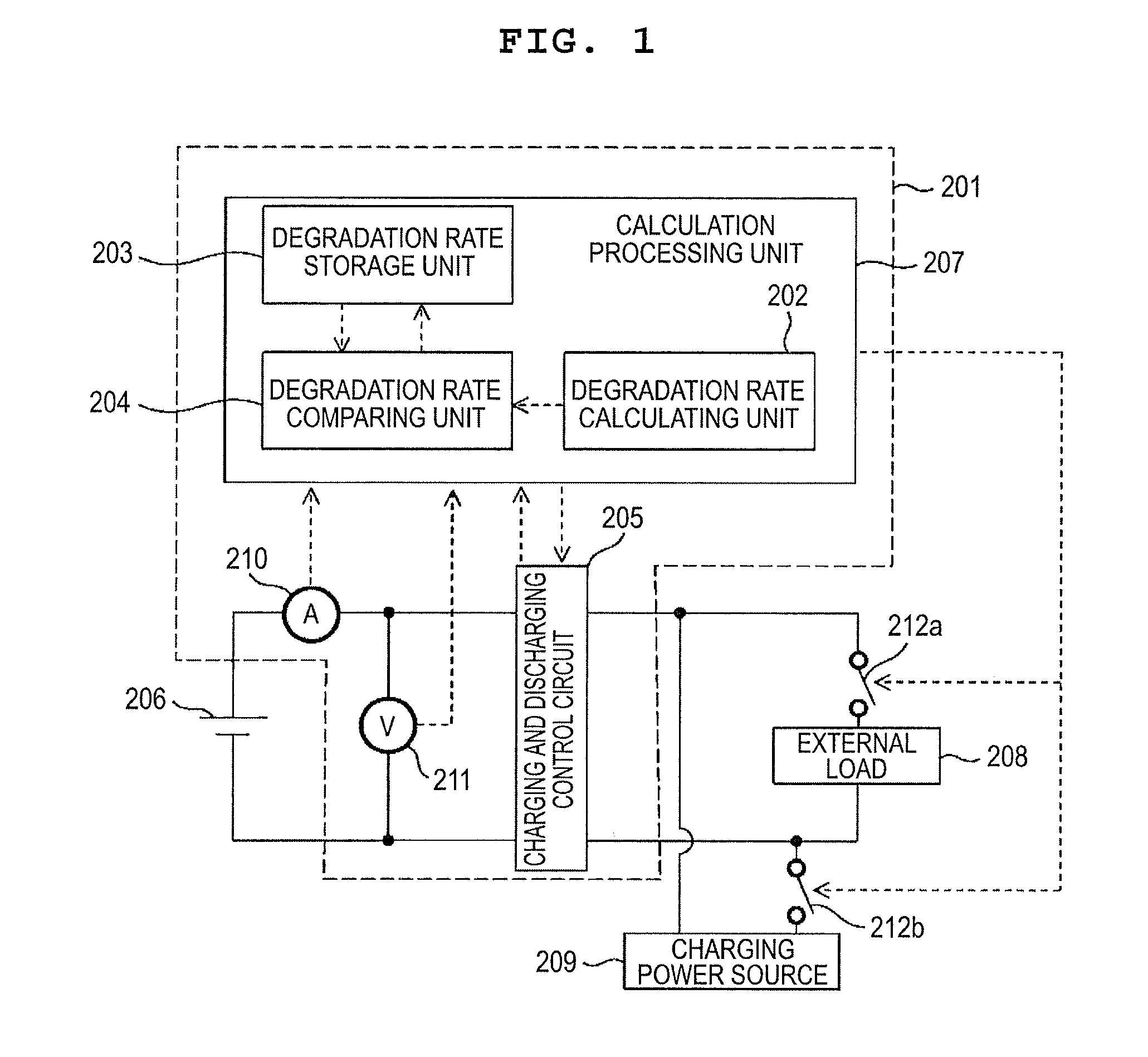Lithium Ion Battery Control System and Assembled Battery Control System
- Summary
- Abstract
- Description
- Claims
- Application Information
AI Technical Summary
Benefits of technology
Problems solved by technology
Method used
Image
Examples
example 1
[0123]A lithium ion battery (battery) having the structure shown in FIG. 5 was first manufactured. Here, LiNi1 / 3Mn1 / 3Co1 / 3O2 was used as the positive-electrode active material and natural graphite (the distance between graphite layers (d002) measured through the X-ray structure analysis was 0.336 nm) was used as the negative-electrode active material. An aluminum foil was used as the positive electrode and a copper foil was used as the negative electrode.
[0124]The manufactured battery as the battery 206 was charged by the use of the lithium ion battery control system shown in FIG. 1 and the battery characteristics were evaluated through the use of the below-described method. In the below-described method, degradation rates before and after charging and discharging the battery by a predetermined capacity were used as the present degradation rate and the previous degradation rate.
[0125]The manufactured battery was charged to 4.20 V with a current corresponding to 0.3 CA at the normal ...
example 2
[0134]Similarly to Example 1 except that the value of the constant power at the 1000-th cycle was changed from 8 W to 4 W, the cycle was repeated.
[0135]As a result, the degradation rate comparing unit made a correction in the 170-th, 450-th, 620-th, and 880-th cycles. The DC resistances at those times were 56.0 mΩ, 58.4 mΩ, 59.9 mΩ, and 62.2 mΩ, respectively.
[0136]Then, the battery capacity retention rate and the DC resistance increasing rate after 1000 cycles were calculated. The results are shown in Table 1. The initial battery capacity was 1.150 Ah, the initial DC resistance was 54.5 mΩ, the battery capacity after 1000 cycles was 0.987 Ah, and the DC resistance after 1000 cycles was 63.2 mΩ.
PUM
 Login to View More
Login to View More Abstract
Description
Claims
Application Information
 Login to View More
Login to View More - R&D
- Intellectual Property
- Life Sciences
- Materials
- Tech Scout
- Unparalleled Data Quality
- Higher Quality Content
- 60% Fewer Hallucinations
Browse by: Latest US Patents, China's latest patents, Technical Efficacy Thesaurus, Application Domain, Technology Topic, Popular Technical Reports.
© 2025 PatSnap. All rights reserved.Legal|Privacy policy|Modern Slavery Act Transparency Statement|Sitemap|About US| Contact US: help@patsnap.com



